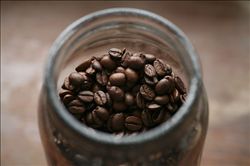Introduction to boutique coffee what is boutique coffee
As a proper term, boutique coffee (Specialty Coffee) was first put forward by Ms. Erna Knustsen, who is known as the godmother of boutique coffee, in the Tea and Coffee monthly (Tea& Coffee Trade Journal) in 1974, which showed that "only in the most favorable microclimate and soil and water can we cultivate boutique coffee with unique flavor". The aim is to distinguish it from the commercial coffee in New York futures market.
In 1972, Ms. Knudsen co-founded the American Fine Coffee Association (SCAA,Specialty Coffee Association of America) with six others, including Donald N. Schoenholt, and the word "specialty coffee" became a global language. Knudsen has always been opposed to the coffee industry blindly pursuing the invariance and monotonicity of flavor with low-cost formula beans, ignoring the unique "Terroir" of coffee from different producing areas, that is, different soil, variety, climate, and soil and water, resulting in different coffee flavor, which is the soul of fine coffee. Without the unique regional flavor, it is not fine coffee, but ordinary commercial beans or canned coffee (large canned coffee beans or powder).
Ms. Knudsen first put forward the concept of boutique coffee, emphasizing the relationship between upstream planting environment and coffee quality. Today, the American Fine Coffee Association has redefined the concept of boutique coffee:
Carefully select the most suitable variety and plant it in the altitude, climate, soil and water environment that is most conducive to the development of coffee flavor. Careful washing and sun processing, select the most advanced raw beans without defects, and deliver them to customers with zero defects in the transportation process. After the superb craftsmanship of the roaster, it leads to the richest regional flavor, and then brews delicious coffee in a recognized way of extraction.
According to this definition, the connotation of fine coffee not only includes the most core factor of planting environment, but also includes three key processes: raw bean treatment process, baking process and extraction (brewing) process. In short, high-quality coffee should be a trinity of "good raw beans, good roasting and good extraction".

Important Notice :
前街咖啡 FrontStreet Coffee has moved to new addredd:
FrontStreet Coffee Address: 315,Donghua East Road,GuangZhou
Tel:020 38364473
- Prev

What do different kinds of coffee beans have in common?
Origin: Hawaii is perfect in appearance, full-bodied, full-bodied, well-balanced acidity and cinnamon. Perhaps the most beautiful coffee bean in the world. Kona coffee beans from Hawaii have the perfect appearance, and their fruit is extremely full and shiny. The taste of coffee is rich and aromatic, with cinnamon flavor, and the acidity is well balanced. Brazilian coffee bean producing area:
- Next

Colombian Coffee-Origin quality
No matter in terms of yield or texture, Colombian coffee is first produced by Medellin, which is characterized by full granules, rich nutrition, moderate acidity, good balance, rich aroma and soft taste. In addition to Medellin, the provincial capitals of two neighboring provinces in the south, Armenia and Manizales, are also famous coffee producers
Related
- Does Rose Summer choose Blue, Green or Red? Detailed explanation of Rose Summer Coffee plots and Classification in Panamanian Jade Manor
- What is the difference between the origin, producing area, processing plant, cooperative and manor of coffee beans?
- How fine does the espresso powder fit? how to grind the espresso?
- Sca coffee roasting degree color card coffee roasting degree 8 roasting color values what do you mean?
- The practice of lattes: how to make lattes at home
- Introduction to Indonesian Fine Coffee beans-- Java Coffee producing area of Indonesian Arabica Coffee
- How much will the flavor of light and medium roasted rose summer be expressed? What baking level is rose summer suitable for?
- Introduction to the characteristics of washing, sun-drying or wet-planing coffee commonly used in Mantenin, Indonesia
- Price characteristics of Arabica Coffee Bean Starbucks introduction to Manning Coffee Bean Taste producing area Variety Manor
- What is the authentic Yega flavor? What are the flavor characteristics of the really excellent Yejasuffi coffee beans?

